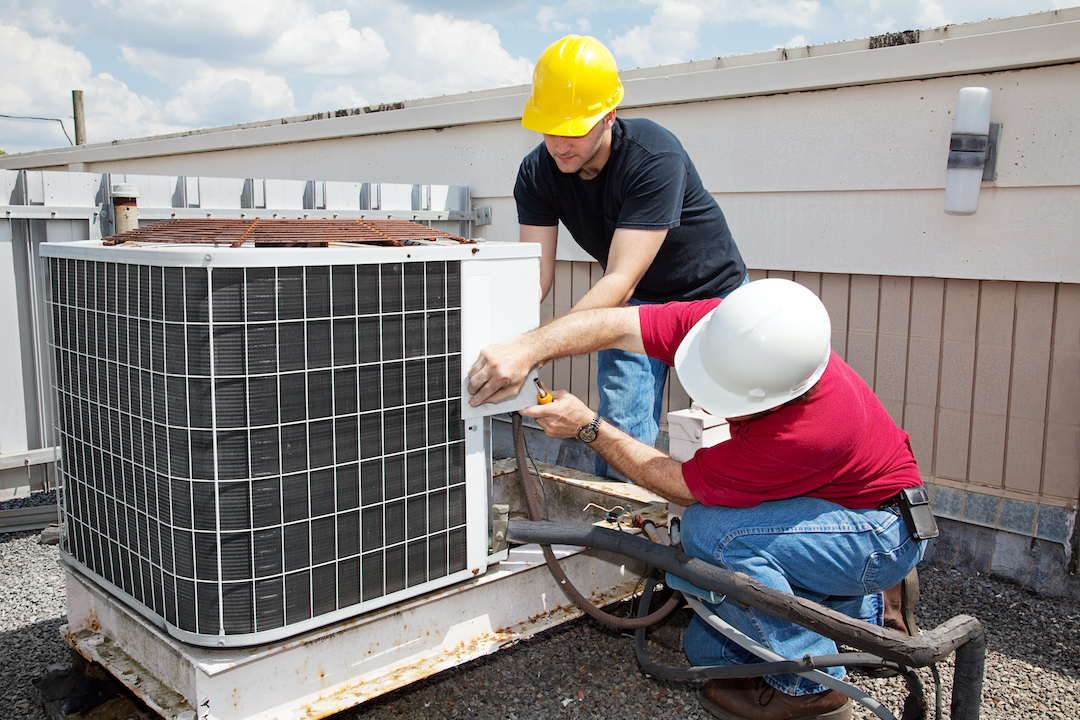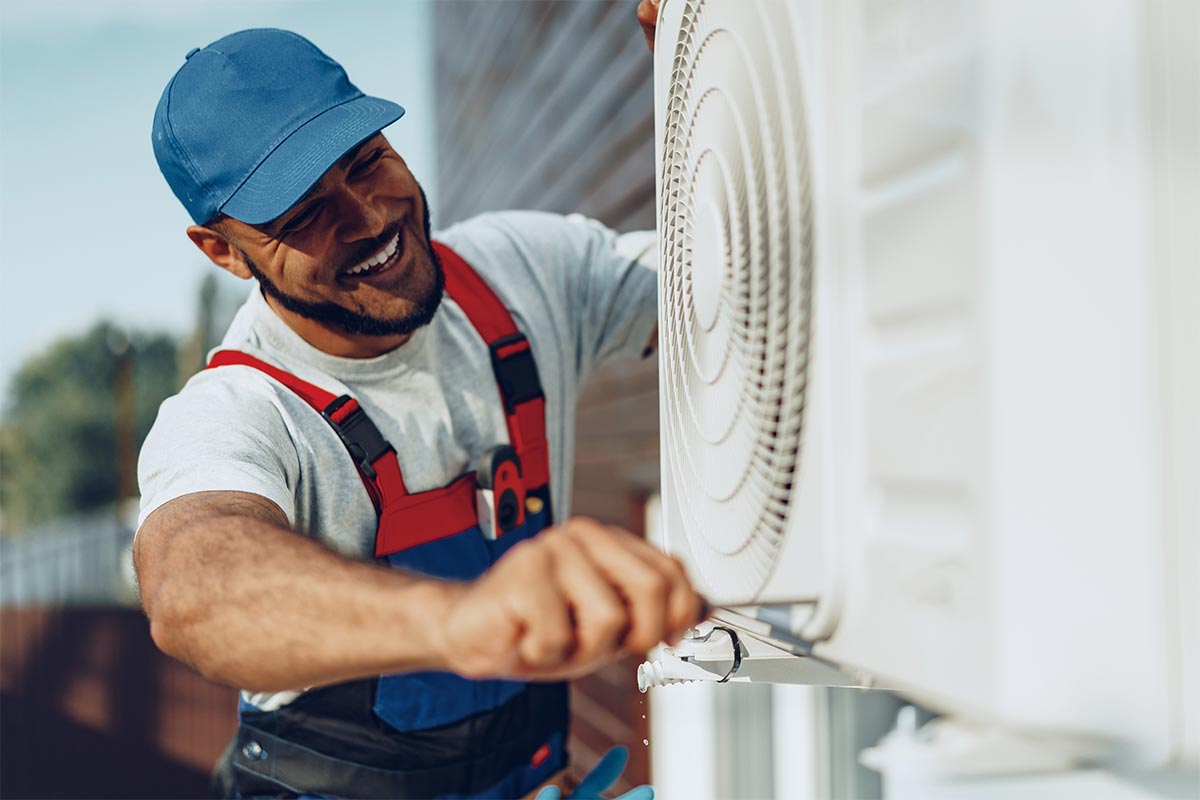How a Heatpump and Heating System Interact to Maximize Your Home's Home heating Performance
Understanding just how a heatpump and heater interact is vital for house owners looking for efficient heating services. Each system has its strengths, supplying a well balanced strategy to home convenience. The heatpump excels in modest temperatures, while the heater supplies rapid warmth during severe cold. This synergy not only reduces power prices yet also boosts the lifespan of both home appliances. What factors affect this collaboration, and how can house owners optimize their advantages?
Recognizing Warm Pumps: Exactly How They Work
Although lots of people may be strange with their inner operations, warm pumps play a necessary duty in modern-day heating systems. These tools operate by moving heat from one area to another, making use of the concepts of thermodynamics. In chillier months, a warmth pump extracts warmth from the outdoors air, ground, or water, and transfers it inside to heat the space. Conversely, throughout warmer months, it can reverse the procedure, working as an a/c by eliminating warm from inside to the outside.Heat pumps are composed of an evaporator, condenser, compressor, and development shutoff. The cooling agent within the system absorbs warm as it evaporates at low temperature levels and pressures. The compressor then boosts the stress and temperature of the refrigerant, allowing it to launch warmth as it condenses. This reliable process can substantially lower energy consumption compared to typical home heating methods, making heatpump a lasting option for environment control in homes.
The Function of Furnaces in Home Heating
Furnaces play an essential duty in home heating by supplying a trustworthy resource of warmth during the colder months. They operate by producing warmth via combustion or electrical resistance, dispersing it throughout the home via air ducts or radiant systems. The effectiveness of a heater is often gauged by its Yearly Gas Application Efficiency (AFUE) rating, which indicates just how effectively the unit converts fuel right into heat.Furnaces can make use of numerous power sources, including all-natural gas, oil, electricity, or gas, allowing house owners to select one of the most ideal choice for their requirements. Unlike heatpump, which may struggle in extreme chilly, heaters maintain constant efficiency, making certain that interior temperature levels remain comfortable despite outside problems. Additionally, modern-day heating systems often come equipped with sophisticated technology, such as variable-speed blowers and clever thermostats, improving their efficiency and responsiveness. This flexibility makes heaters an essential component in all-inclusive home heating techniques.

Benefits of Utilizing Both Solutions With Each Other
Integrating the staminas of both heaters and heatpump can result in an extra efficient and efficient home heating remedy. Using both systems enables property owners to make the most of the heatpump's power effectiveness throughout milder temperatures while depending on the heater for more severe cold problems. This double method can substantially decrease energy costs, as heatpump eat less electricity than typical heating techniques when temperature levels are moderate.Additionally, using both systems with each other can improve convenience levels in the home. Heat pumps can supply regular, even home heating, while heaters can quickly increase ambient temperature levels when needed. Moreover, the combination of both systems can expand the life-span of equipment by decreasing deterioration on each device, as they share the work. Ultimately, homeowners can delight in a well balanced, cost-efficient home heating remedy that adjusts effortlessly to differing climate condition, ensuring a warm and welcoming home throughout the wintertime months.
Just How Heat Pumps and Furnaces Enhance Each Various Other
They create a complementary heating system that optimizes performance and comfort when house owners integrate warm pumps and heating systems. Heatpump run by moving heat from the outdoors air or ground, making them extremely reliable in moderate environments. They excel throughout milder temperatures, providing cost-effective heating. Alternatively, heating systems create warmth with combustion or electrical resistance, providing strong, instant heat during extreme cold conditions.The combination of these 2 systems permits dynamic modifications based on temperature changes. During warmer months or milder winter season days, the heat pump can take the lead, preserving energy and minimizing prices. As temperatures decrease, the heater can flawlessly engage, making certain consistent heat throughout the home. This synergy not just maximizes energy usage but additionally boosts the life-span of both systems, as each system runs within its ideal performance range. With each other, they develop a well balanced atmosphere that adjusts to differing environment needs.
Maximizing Performance: Tips for Homeowners
Homeowners can boost their heating efficiency via numerous useful approaches. Developing a normal upkeep schedule, integrating smart thermostat innovation, and executing effective insulation and sealing solutions are essential actions. These actions not just enhance comfort however also decrease power prices.
Routine Upkeep Arrange
To assure optimal home heating performance, establishing a regular maintenance schedule is essential for any kind of home. Home owners need to focus on routine assessments of both heatpump and heating systems to determine peak performance. This consists of altering air filters every one to three months, as blocked filters can substantially minimize performance. Furthermore, organizing professional maintenance at the very least annually allows technicians to recognize and resolve prospective concerns before they escalate. Home owners must also cleanse the warm pump's outdoor system to avoid debris accumulation that can hinder air flow. By sticking to a routine maintenance routine, home owners not just improve their home heating systems' effectiveness but additionally extend their life-span, leading to better comfort and lowered energy expenses throughout the cooler months.
Smart Thermostat Combination
Integrating a wise thermostat into a home heating unit can greatly enhance power performance, particularly as it permits exact control over temperature level setups. These tools can find out the home owner's timetable and preferences, automatically readjusting the temperature level to optimize convenience while minimizing energy use. For circumstances, they can decrease home heating during times when the home is unoccupied, decreasing unnecessary intake. Numerous smart thermostats additionally give real-time power usage information, making it possible for home owners to make enlightened decisions concerning their heating practices. In addition, remote gain access to by means of smartphone applications enables users to readjust settings from anywhere, ensuring the home is cozy upon return. Generally, smart thermostat assimilation not only boosts convenience but substantially adds to energy financial savings and efficiency.
Insulation and Securing Solutions
Smart thermostats play a vital function in power effectiveness, yet their efficiency can be greatly boosted by appropriate insulation and securing options. Property owners need to prioritize shielding attics, wall surfaces, and floorings to decrease heat loss. Top notch insulation products, such as spray foam or fiberglass, can significantly boost thermal resistance. Additionally, sealing spaces around ducts, doors, and windows prevents chilly air seepage and warm retreat. Weatherstripping and caulking work methods for attending to these leakages - furnace replacement. Regular inspections for air leakages, along with making use of blower door examinations, can aid recognize problem areas. By purchasing insulation and sealing, property owners can maximize the efficiency of their heater, eventually leading to decreased energy consumption and lower energy expenses
Typical Myths Regarding Warm Pumps and Furnaces
What mistaken beliefs surround heat pumps and heating systems? Several people incorrectly believe that warm pumps company website are inefficient in colder environments. In truth, modern heatpump are created to operate successfully also in reduced temperatures, providing reputable heating throughout winter. An additional typical misconception is that heating systems are always extra reliable than heatpump. Nevertheless, this depends on the details power resources and performance scores of the units concerned. Some may also assume that utilizing both systems at the same time is unneeded, but as a matter of fact, this combination can optimize heating efficiency, particularly during extreme weather. In addition, individuals usually assume that heatpump call for constant maintenance, when truthfully, they have similar upkeep needs to standard heater. By debunking these misconceptions, property owners can make even more educated choices concerning their heating alternatives, ultimately causing enhanced convenience and power performance in their homes.
Maintenance Factors To Consider for Combined Equipments

Often Asked Questions
Can Heat Pumps Work Efficiently in Extremely Cold Climates?
Heatpump can battle in exceptionally cool environments due to reduced efficiency and warmth removal constraints. Developments in innovation have actually led to designs designed for much better efficiency in such problems, improving their viability in rough settings.
The Length Of Time Do Heat Pumps and Furnaces Commonly Last?
Heatpump usually last 15 to 20 years, while heaters have a life-span of 15 to 30 years. Routine upkeep can extend their durability, making certain effective procedure and reducing the requirement for early replacements.

What Is the Average Price of Setting Up Both Systems?
The ordinary cost of mounting both a heat pump and a heater normally ranges in between $5,000 to $10,000 - furnace replacement. Factors affecting this price consist of system dimension, setup complexity, and regional labor prices
Are There Tax Obligation Incentives for Utilizing Energy-Efficient Home Heating Systems?
Lots of home owners ask about tax obligation motivations for energy-efficient home heating systems. Numerous federal and state programs typically provide credits or refunds, motivating the adoption of sustainable innovations to minimize power intake and promote environmental responsibility.
Exactly how Do I Pick the Right Size Heatpump and Furnace?
Choosing the ideal dimension heatpump and heater involves calculating the home's square footage, thinking about insulation high quality, and examining regional environment. Consulting an expert can ensure optimal system efficiency and energy performance based upon certain requirements. heat pump replacement ooltewah tn. Recognizing just how webpage a warmth pump and heater job with each other is important for homeowners seeking reliable home heating solutions. In cooler months, a warmth pump essences heat from the outdoors air, ground, or water, and transfers it inside your home to warm the living room. When home owners integrate warm pumps and furnaces, they develop a complementary home heating system that makes best use of effectiveness and click here for info comfort. Warmth pumps run by moving heat from the outdoors air or ground, making them extremely efficient in modest environments. Warm pumps can have a hard time in extremely cool environments due to reduced performance and warm extraction limitations
Comments on “Must-Know Details Before heat pump installation ooltewah tn”